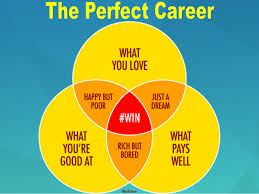Many of us think we can easily spot someone who is not telling us the whole truth or is fabricating the facts. We believe in the myth that we can look into people’s eyes or watch their body language to know whether or not they are telling the truth. Unfortunately, we only have a 17 percent chance of getting it right. As business people, we need to get real about spotting liars. It’s important to be on the lookout to ensure that as we grow our companies with new hires and strategic business relationships that we’re not relying on half-truths or fabrications. Doing so will negatively impact our bottom line and sabotage win-win-win outcomes.
3 Ways to Get Real – and be responsible for getting to the truth
Look at the Facts. Too often we base our decisions on how we feel during an interaction. Or, we fall victim to the story they are telling us. Reality is, many liars are really good at assessing others and telling them what they want to hear. To combat this, ask for fact-based information and verify this information before believing it and relying on it.
One entrepreneur hired a sales coach simply based on the person’s promise to help her launch her new product. She believed in what he promised to do. Here’s what happened: the launch never occurred and the coach disappeared. Instead of checking the person’s credentials upfront, after the fact, she found out he was an accountant. She is now working a full-time job to payback the bills incurred during the failed launch.
Get Agreements in Writing. Gone are the days of making an agreement based on a hand-shake. Too often, when having conversations, we’re not on the same page. As a result, misunderstandings occur and things are not as they seem. Negotiate before signing any documents. Take the time to read the entire document before signing it (even the fine-print.) It’s pay now or potentially pay later.
Use Honesty-Integrity Assessments. About 79 percent of job candidates stretch the truth or embellish jobs, education, and salaries on their resumes. Relying upon background checks to tell you the whole truth does not work. Many employers don’t prosecute for theft or verify work history or education. (Note: White collar theft of money, proprietary information and data is the fastest growing group.) Use a direct-admission tool* and ask the candidate the questions contained in the report to determine truthfulness (yes, still conduct background checks, work and education verification and drug screens).
The key is to get real with yourself and your ability (and inability) to spot people that are lying. Learn how to use probing questions to get to the truth when hiring employees (use qualified assessment tools*), and when selecting vendors and developing new business relationships (use good business practices).
©Jeannette Seibly, 2016
*When hiring, use the Step One Survey II® a honesty-integrity core value assessment that measures attitudes toward Integrity, Reliability, Work Ethics and Substance Abuse. This tool provides direct-admission information about a candidate’s past employment, employment-related issues, illegal substance use, theft of time/money/property, and computer/internet/email abuse. The online report delivers a forecast of how well the candidate will blend in with your culture and workplace climate. There is also a Distortion notification if candidates are not being forthright in their responses. For further information, contact Jeannette @ http://SeibCo.com/contact
Jeannette Seibly has been a business advisor and facilitator for over 23 years; she guides the creation of new solutions for business challenges and is the author of Hire Amazing Employees (http://BizSavvyHire.com). Check out her website: http://SeibCo.com.

